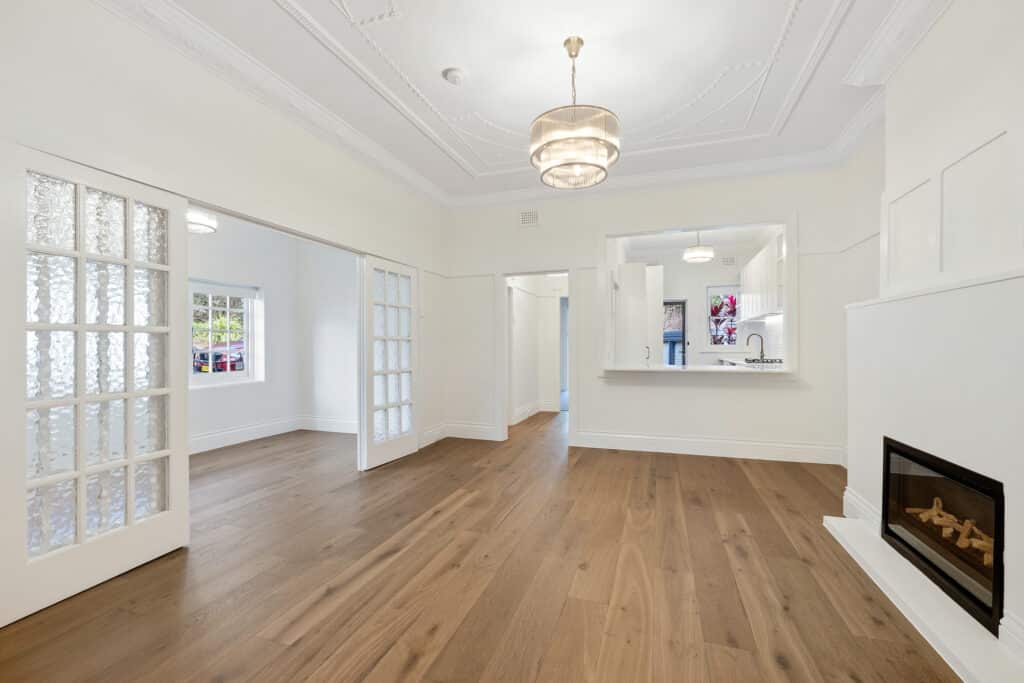
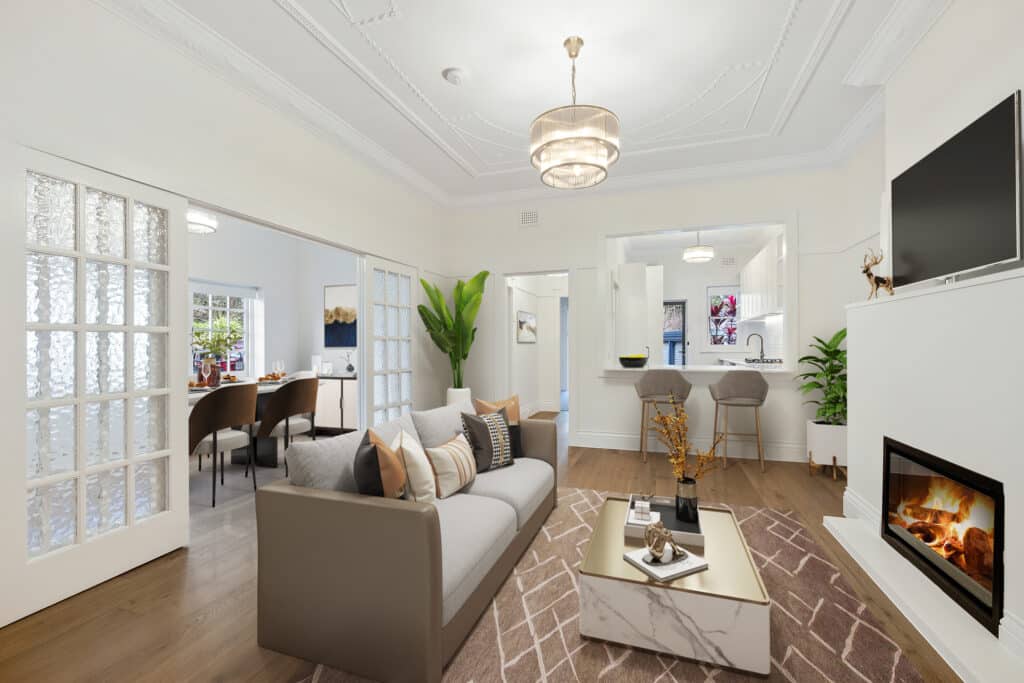
So you’ve heard the saying, “You get what you pay for.” While opting for something cheap and fast might seem appealing, it can also open Pandora’s box of unforeseen issues and challenges. However, let’s remain open-minded as we delve deeper into the advantages and disadvantages of using AI-driven virtual furniture rendering versus traditional manual Virtual Furniture Styling.
AI-Driven Virtual Furniture Styling
Advantages:
- Efficiency and Speed: AI tools can generate numerous design alternatives with a single click, significantly accelerating the design process and freeing you to focus on other tasks.
- Cost-Effectiveness: AI reduces the need for human labor, potentially lowering costs for bulk use and offering rapid turnaround times.
Disadvantages:
- Lack of Creativity: AI often struggles with deep, creative personal preferences, leading to designs that feel generic and less customized. For example, you may want to include lifestyle elements such as a surfboard to suggest proximity to the beach or posters and a skateboard to indicate a teenager’s bedroom, emphasizing it as an accomodating family-sized home. You may find it difficult to get this creative customisation in your AI output.
- Limited Problem-Solving: AI cannot effectively handle unexpected design challenges that require on-the-spot creativity and adaptation. Not all rooms are simple square boxes with a window; challenges will arise that AI might not address without significant user input and iterative attempts, still leaving you short of your expectations.
- Misplacement of Furniture: Due to AI’s inability to fully understand the physical floor plan based solely on a 2D photo, it may place furniture in impractical locations, such as blocking doorways or encrouching pathways not visible in the frame. Only a human can interperate this additional known information.
- Resolution and Output Quality: While AI is fast, the output quality can be questionable, potentially resulting in low-resolution images that do not meet your requirements or a degradation in overall image quality, including additional grain and other unexplained abnormalities. Moreover, if the original photo quality is poor (as you chose to not use a professional photographer), AI might struggle to accurately interpret parts of the room or mismatch the output furniture quality to the original photo quality, producing an obviously fake image that detracts from your presentation.
- Copyright Issues: Did you know that standard copyright law instantly protects the original creator of professional photos from being used by third parties? Just because you paid for a professional photographer, it does not mean you own the right to the photos to then modify them with your virtual furniture AI tool. To avoid legal issues, it may be safest to return to your original photographer for the creation of virtually styled images.
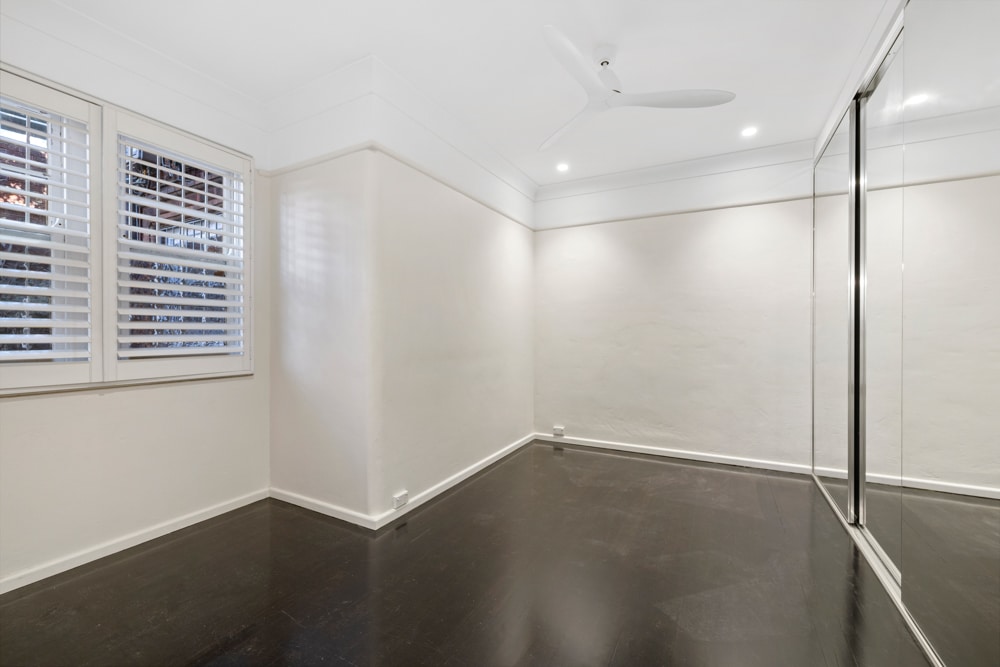
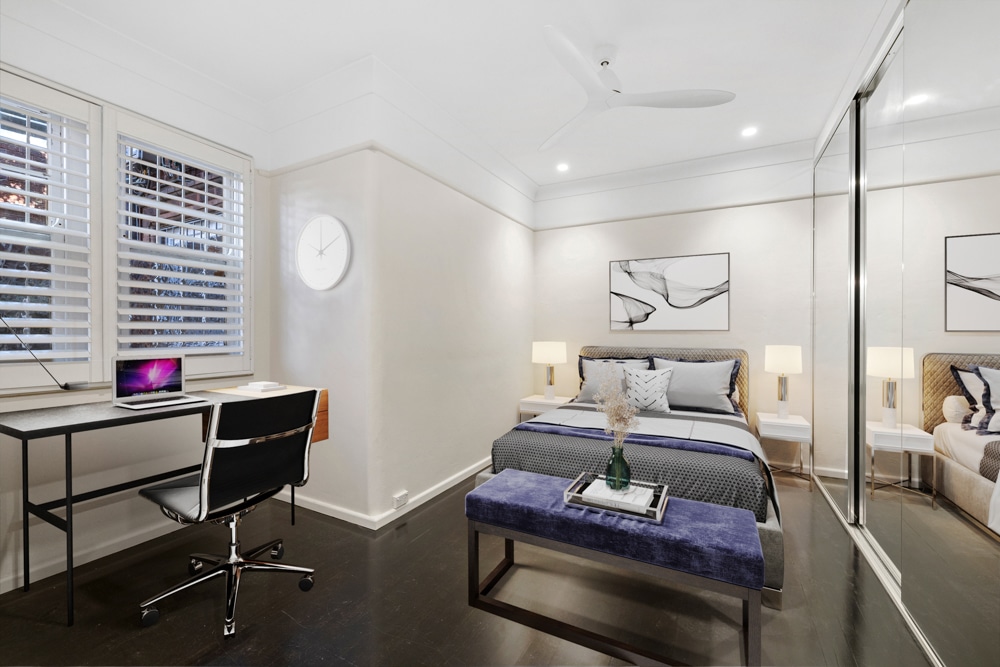
Traditional Virtual Styling allowed for study space and a balanced queen-size bed with good mirror reflection.

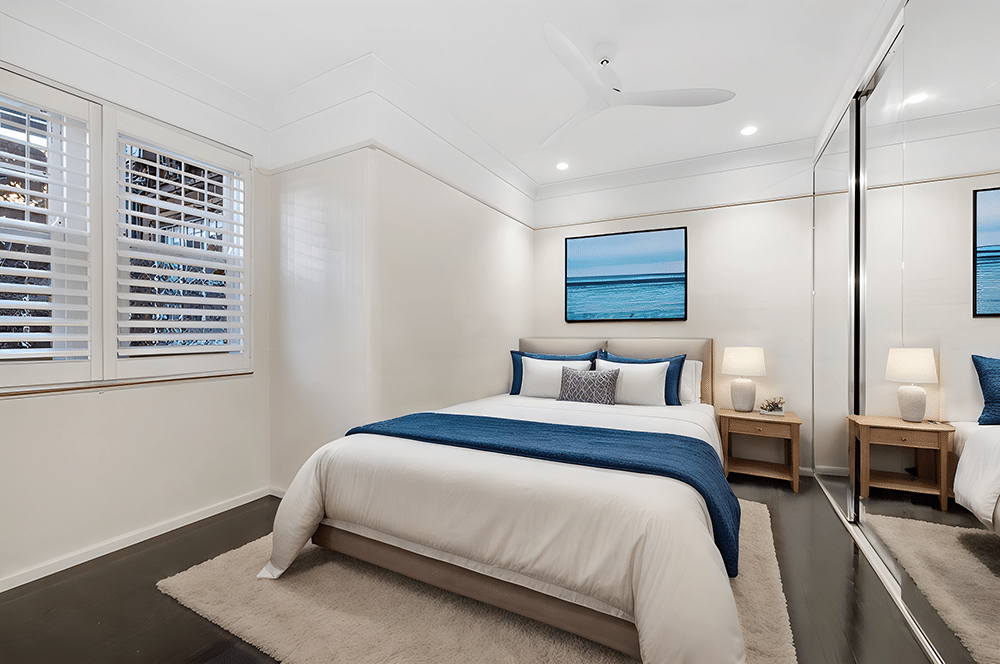
Leading AI Virtual Styling app created an oversized bed with a missing side table and poor mirror reflection. Study space ignored.
Traditional Manual Virtual Furniture Styling
Advantages:
- Attention to Detailed Customization: Manual stylists can interpret subtle nuances in client desires and expectations, allowing for highly customized and emotionally resonant spaces. Small elements can be tweaked manually to address important marketing concerns.
- Optimal Photo Angles: A room might appear visually pleasing when empty but could present challenges later during styling if not properly considered at the time of the professional photoshoot. Professional photographers carefully craft photo angles during the property photoshoot to accommodate the future post process virtual furniture placement. Without this foresight, your in-office AI styling efforts might result in awkward views, like looking at the back of a sofa or a partially obscured or ill-fitting important element.
- Understanding of Physical Space: Professional Real Estate Photographers (that also offer Virtual styling) visiting the site get to truely understand the physical space and floor plan, ensuring practical placement of virtual furniture. Photographers carefully craft photo angles during the property photoshoot to accommodate future virtual furniture placement. This foresight ensures that the angles chosen enhance the room’s aesthetics and functionality once styled, avoiding cluttering or awkward obstruction of key elements.
- Continuity & Quality Control: A human can oversee consistency across a photo series that require continuity within the project. If multiple photos of a room from different angles or separate room photos need to connect visually, consistency in furniture and placement is crucial. AI software can not detect this need.
- Virtual Renovations: A more advanced styling option that may include the change of wall colours, carpet, or partial modifications to existing furniture or architecture. Typically, this is when you are faced with an already poorly furnished room that needs to be completely restyled. Alternatively, a room that needs to be marketed ahead of scheduled repairs or renovations. AI styling may struggle to interpret the room and struggle to give you something you can work with. A Virtual Renovation requires a lot more user intervention by the artist to see the completion of the project.
Disadvantages:
- Time & Money: Let us simply refer back to the 2 strong advantage points for using AI- Virtual Furniture Styling in the first place.
The strongest point for AI-driven styling is its efficiency and speed, allowing rapid generation of design alternatives, which is particularly beneficial for fast-paced needs. However, there are still unforeseen challenges and styling errors that can be counterproductive leaving your needs unresolved. The final results can then be a poor representation of your brand and reputation. Conversely, traditional manual Virtual Styling, while slower, will offer full customisation, clear and concise to the expectations. One thing AI definitely can’t do is physically visit a property, seeing with its own eyes to interpret the space and make additional decisions with information that can’t be seen in a simple two-dimensional photo. This ensures a depth of creativity and personalisation that AI will never be able to replicate.

